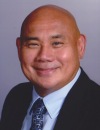Co-Located Conference Agendas3D-Culture & Organoids 2019 | 3D-Printing in the Life Sciences | Organ-on-a-Chip World Congress 2019 | Stem Cells in Drug Discovery Tox & Organoids 2019 | The Space Summit 2019 | 

Monday, 14 October 201907:30 | Conference Registration, Materials Pick-Up, Morning Coffee and Pastries | |
Welcome and Introduction to the Conference by Conference Chairpersons |
| | |
Venue: Coronado Ballroom C |
| | 09:00 |  | Conference Chair Welcome and Introduction to the Conference
Jana Stoudemire, Director, In-Space Manufacturing, Axiom Space, United States of America
|
| 09:00 |  | Conference Chair Welcome and Introduction to the Conference
Marc Giulianotti, Program Director, International Space Station U.S. National Laboratory, United States of America
|
| 09:15 |  | Keynote Presentation Tissue Engineering and Regenerative Medicine in Space: How the ISS National Lab is Your Gateway to Translational Innovation
Michael Roberts, Chief Scientific Officer, International Space Station National Laboratory, United States of America
The International Space Station is one of humankind’s greatest technical achievements—orbiting some 400 km above our planet and traveling at over 28,000 kilometers per hour. But even more importantly, the ISS has continuously enabled a human presence in space where astronauts have lived, worked, and conducted cutting edge R&D for 19 years. Aside from housing astronauts and hosting research facilities that push the boundaries of technology and innovation, the space station and the ISS National Lab have also been home to over 2,500 science experiments that leverage the unique space environment to benefit life on Earth and explorers traveling off of Earth. The ISS National Lab is available to a myriad of government, academic, and commercial researchers interested in looking at their science questions through a new lens. Among the new research programs in microgravity are multiple investigations in stem cells, organoids, organs on chips, regenerative medicine, tissue engineering, and 3D bioprinting that are already accelerating the pace of discovery to push us beyond the limits of our imagination to address health problems here on Earth. |
| 09:45 | Modeling the Effects of Spaceflight on the Human Heart Using Stem Cell-derived Cardiomyocytes
Arun Sharma, Assistant Professor, Cedars-Sinai Medical Center, United States of America
With extended stays aboard the International Space Station (ISS) becoming commonplace as humanity prepares for exploration-class space missions, the need to better understand the effects of microgravity on cardiac function during spaceflight is critical. However, primary human heart tissues, which would be useful for in vitro studies on heart function, are difficult to obtain and maintain. As a model system, we utilized cardiomyocytes (CMs) derived from human induced pluripotent stem cells (hiPSCs) to study the effects of microgravity on human cardiac function and gene expression at the cellular level. We derived hiPSCs from three healthy volunteers and produced hiPSC-CMs using a high-efficiency differentiation protocol. We cultured hiPSC-CMs in a microgravity environment aboard the ISS for approximately one month, during which weekly media changes were conducted. We analyzed the gene expression, structure, and function of space-flown and groundside control hiPSC-CM samples using RNA-sequencing, immunofluorescence, calcium imaging, and contractility assessment. This study represents the first time that hiPSC technology has been used to study the effects of spaceflight on human cardiomyocyte function and demonstrates that microgravity affects human cardiomyocyte function on the cellular level. | 10:15 | Morning Coffee Break and Networking in the Exhibit Hall | 10:45 | Stem Cell Regeneration in Space: Using Microgravity to Understand Earth-based Diseases
Elizabeth Blaber, Assistant Professor, Rensselaer Polytechnic Institute (RPI); Research Scientist, USRA/NASA Ames Research Center, United States of America
During the last several decades of microgravity (mechanical unloading) research, significant progress has been made in the field of space biology that is shaping our understanding of how gravity regulates physiological processes. Exposure to microgravity during spaceflight results in tissue degeneration in multiple physiological systems including muscle atrophy, bone loss, immune deficiencies and cardiovascular impairment. Our ongoing studies with the mouse bone model have identified the failure of normal stem cell-based tissue regeneration, in addition to degeneration, as a significant concern for long-duration spaceflight, especially in the mesenchymal and hematopoietic tissue lineages. Our experimental work in microgravity flight experiments have aimed to investigate the molecular, cellular and tissue aspects of the hypothesis that gravity mechanical loading regulates tissue regenerative health and includes studies of mouse bone tissue regeneration on the US Space Shuttle/ISS and the Russian Biosatellite BionM1, newt tail regeneration on the Russian Satellite Foton M2 and M3 and mouse embryonic stem cells on the US Space Shuttle/ISS. Through the use of large-scale genomics data sets and computational analysis using cross-species comparisons, this work has identified a load-dependent molecular regulator that likely impairs tissue regenerative capabilities in unloaded environments. The results from this work hold the promise of greater scientific understanding of how to maintain and monitor health during future voyages of space exploration, and solidly establishes Earth’s gravity as a major shaper of human life through promoting tissue regenerative health. Additionally, as microgravity is thought to cause accelerated aging and onset of age-based disease phenotypes, including osteoarthritis, cardiovascular disease, and fibrotic liver disease, this research has broad applications to debilitating disease progression both in space and on Earth. | |
Session Title: Stem Cells in Microgravity -- Researchers Perspective Moderated by Marc Giulianotti, ISS-US National Laboratory |
| | 11:15 | Human Cardiovascular Progenitor Cell Culture on the International Space Station
Mary Kearns-Jonker, Associate Professor, Loma Linda University School of Medicine, United States of America
Microgravity and the spaceflight environment influences the transcriptome, function and differentiation of cardiovascular progenitor cells. Our research team studied the effect of spaceflight on human cardiovascular progenitor cells which were flown aboard the International Space Station for 30 days and recovered live to Earth. Spaceflight and the microgravity environment was found to impact mechanotransduction, cardiogenesis, cell cycling, DNA repair, and signaling events. Microgravity exposure was associated with enhanced proliferative potential and migration as well as elevated expression of paracrine factors. Neonatal human cardiovascular progenitor cells cultured in space demonstrated enhanced stemness. This presentation will discuss our findings and the relevance of these results for stem cell based applications on Earth and cardiovascular progenitor cell function in space. | 12:00 | Networking Lunch in the Exhibit Hall and Poster Viewing | 12:30 | Tiny Spaces for the Infinite Space: Continuous-Flow- and Plasma Chemistry-based Technology Systems for Space Manufacturing?
Volker Hessel, Professor,, The University of Adelaide, Australia
This talk likes to give a perspective on the use of continuous-flow- and plasma chemistry-based Technology Systems for space manufacturing. Main message is: space manufacturing is “off-earth manufacturing” - the advanced technologies will have dual use: also on earth, e.g. in deep sea, in dry lands, and other disruptive scenarios. | |
Session Title: Stem Cells in Microgravity -- Researchers Perspective Moderated by Jana Stoudemire, Space Tango |
| | 13:15 | Impact of Microgravity on Cardiac Cells Derived From Stem Cells
Chunhui Xu, Associate Professor, Emory University School of Medicine, United States of America
Cardiac muscle cells derived from stem cells have the potential to be used to repair damaged heart tissue and to model cardiac disease. Cardiac muscle cells can be derived from human induced pluripotent stem cells using factors that regulate cardiogenesis. However, practical use of these cells faces challenge in efficient cell production. We have found that combining tissue engineering and microgravity can improve the quality of cardiac cells derived from stem cells. | 13:45 | Immunological Senescence in Space Affects Stem Cell Behavior and Function
Xiaomeng Hu, Scientist, University of California-San Francisco, United States of America
Aging is associated with dysregulation of the immune response, which is also termed “immunosenescence.” Each part of the immune system is influenced to some extent by the aging process. However, adaptive immunity seems more extensively affected, and it is especially the T cells that are altered. In fact, the number and proportion of late-differentiated T cells (so called TEMRA cells), is higher in the elderly than in the young and their accumulation may contribute to the enhanced systemic pro-inflammatory milieu commonly seen in elderly individuals. We do not know exactly what causes these observed changes, but an understanding of the possible causes is now beginning to emerge. Spaceflight causes a suite of negative health effects that may be comparable to immunosenescence, which seems to be a key regulator of the regenerative capacity of tissue- and organ-specific stem cells. Specifically, studies examining the effects of bone healing (by mesenchymal stromal cells; MSCs) and vascular regeneration (by endothelial progenitor cells; EPCs) were performed using tissue mimics on chip to represent “semi-3D” architectures. | 14:15 | Tissue Engineering and Mechanobiology
Michele Grimm, Wielenga Creative Engineering Endowed Professor, Michigan State University, United States of America
This session will describe some of the efforts that the NSF lead in conjunction with the ISS National Lab to fund research in the areas of tissue engineering and mechanobiology. Dr. Grimm will provide an overview of the goals of the program and how the ISS can be utilized to advance the fields funded through the program. The presentation will then be followed by speakers that are funded through the program. | 15:00 | Afternoon Coffee Break and Networking in the Exhibit Hall | 15:30 | The Effect of Microgravity on Lung Stem Cell and Lung Physiologic Responses
Joan Nichols, Professor, University of Texas Medical Branch at Galveston, United States of America
Human lung organoids were developed on site at Cape Canaveral Research Facilities. Sets of 3D lung organoids +/- human macrophages were flown on the ISS from 8/13-8/22/2017. Ground controls were shipped to Texas. Culture supernatant was isolated from ISS flown and ground controls every 5 days as were matched sets of organoids. Organoids were fixed and stored. Analysis of samples has indicated that ISS flown samples showed differences in tissue formation, lung stem cell maturation, lung stem cell attachment to scaffold and surfactant production as well as dispersal compared to ground controls. | |
Session Title: Advances in 3D-Bioprinting in Microgravity. Moderated by Jana Stoudemire, Space Tango |
| | 16:00 |  BioFabrication Facility, Tissue Printing on the International Space Station BioFabrication Facility, Tissue Printing on the International Space Station
Eugene Boland, Chief Scientist, Techshot, Inc.
Techshot is excited to present initial findings from the maiden flight of its BioFabrication Facility operated aboard the ISS after its launch on the SpaceX CRS-18 mission. The company is exploiting the sustained microgravity effects on bioinks first characterized on June 14, 2016 when it printed the first neonatal heart ventricle in zero gravity using adult human stem cells aboard a parabolic flight aircraft. For this first technology demonstration flight aboard the ISS, Techshot printed multiple test structures, as well as structural cardiac tissue. This muscularized tissue could be placed within a patient’s damaged cardiac tissue and be inosculated into the coronary blood flow and regain muscular tone. These early demonstrations are the precursor for future microgravity whole organ printing investigations. This 3D bioprinting capability on the ISS will lead to significant commercial advancements in the healthcare industry, while helping mankind explore beyond low Earth orbit.
| 16:15 |  Understanding the Human Body In Space: Bringing 3D Bioprinting to the ISS Understanding the Human Body In Space: Bringing 3D Bioprinting to the ISS
Ricky Solorzano, CEO, Allevi
There is still so much to learn about biology, especially how gravity plays a role on the human body. The amount of things we can discovery from doing research on the ISS is limitless and needs to be explored! To that end, Allevi has explored the possibilities of placing some of its technology in space and believes it has a clear path to do so by partnering with Made In Space. Made in Space, as the first company to 3D print in space has understood all of the requirements to test, qualify, and launch 3D printing technology onto the ISS. Given this unique advantage, Allevi has developed a bioprinting extruder that can easily swap into the AMF to begin printing either advanced biomaterials for regeneration or biomaterials along with cells for biological experimentation. This will provide a unique advantage to scientists around the world to discovery new things in space.
| 16:30 | Biofabrication of 3D Tissue Models For Disease Modeling and Drug Screening
Marc Ferrer, Director, 3D Tissue Model Laboratory, NIH/NCATS, United States of America
Biofabrication of architecturally defined and physiologically relevant human tissues is emerging as a key technology for drug discovery. The expectation is that 3D biofabricated tissues produced with human iPSC-derived cells will provide functionally and physiologically relevant assay platforms to test small molecules during drug discovery and help narrow the current gaps between current simplistic in-vitro cell assays, non-predictive in-vivo animal models, and human clinical trials. Tissue biofabrication integrates advances in tissue engineering technologies and cell biology, with the development of three-dimensional (3D) bioprinters, biocompatible polymers and hydrogels, and methods to validate the morphology and function of human tissues. I will be presenting some of the work on going at the 3D Tissue Model Laboratory at NCATS to implement rapid, scalable, and reliable biofabrication of architecturally and physiologically defined functional human tissue models in multiwell-plate platforms for disease modeling and drug screening. | 16:45 | Biofabrication in Space: New Approaches for Bioprinting Technology
Elena Bulanova, Head of Cell Technologies, 3D Bioprinting Solutions Russia, Russian Federation
Today, there are three main 3D bioprinting technologies: extrusion, inkjet, and laser-based bioprinting. These methods have common limitations such as slow speed and inability of creation 3D constructs with complex geometry. Therefore, new approaches like acoustic or magnetic bioprinting using patterned physical fields for predictable cells spreading will evolve. The main idea of the concept is using microgravity as a co-factor of bioprinting technology. This concept means using scaffold-free, nozzle-free, and label-free (without using magnetic nano particles) approach so called “formative” biofabrication which has the edge over classical bottom-up additive manufacturing. This technology could be commonly used for space radiation studies to provide long-term manned space flights, including the Moon and Mars program. 3D bioprinter «Organ.Aut» has been sent to ISS and successfully bioprinted human cartilage tissue and murine thyroid organ construct. | 17:00 | 3D Bioprinting of Vascular Tissue and Organs for Clinical Applications on Earth and for Space Exploration
Paul Gatenholm, Professor, Director of 3D Bioprinting Center, Chalmers University of Technology, Sweden; CEO, CELLHEAL AS, Norway, Sweden
Nicole Diamantides, Bioprinting Field Application Scientist, CELLINK, United States of America
3D Bioprinting technology is rapidly developing. The initial challenges of cell survival in 3D Bioprinting process have been addressed and new generations of 3D Bioprinters and bioinks have been developed. Printed living tissues are becoming a standard tool for study of disease, drug screening and testing of cosmetics and chemical products. But no 3D bioprinted tissue has been implanted in human yet. The remaining challenge is to secure vascularization of the tissue. In our laboratory we focus on 3D Bioprinting of autologous adipose tissue which could be performed at the point of care. We have discovered remarkable in situ vascularization of 3D implanted constructs consisted of microfractured adipose and stem cells. Such vascularized tissue constructs can be used for reconstructive soft tissue surgery, wound healing and for delivery of functional cells such as beta cells to restore function of pancreas. This technology can be easy translated to clinic and utilized for Space Exploration. | 17:15 | Neurodegenerative Disease Research on the International Space Station
Andres Bratt-Leal, Vice President, Research and Development, Aspen Neuroscience, United States of America
The ability to create pluripotent stem cells from adult cells has created a new tool to study human diseases. We are studying neurons from Parkinson’s patients and neurons from patients with multiple sclerosis on the International Space Station using a 3D culture model to better understand mechanisms of neurodegeneration. | 17:40 | Closing Remarks at the End of Day 1 of the Conference by Conference Chairpersons | 18:00 | Networking Reception with Beer, Wine and Dinner in the Exhibit Hall -- Sponsored by ATCC | 19:00 | Close of Day 1 of the Conference |
Tuesday, 15 October 201908:00 | Morning Coffee, Pastries and Networking in the Exhibit Hall | |
Venue: Coronado Ballroom C |
| | 09:00 | Opening Remarks by Conference Chairpersons -- Jana Stoudemire (Space Tango) and Marc Giulianotti (ISS US National Laboratory) | 09:15 |  | Keynote Presentation The NIH-CASIS Coordinated Program in Tissue Chip Systems for Translational Research in Space
Danilo Tagle, Director, Office of Special Initiatives, National Center for Advancing Translational Sciences at the NIH (NCATS), United States of America
NCATS has partnered with the International Space Station U.S. National Laboratory (ISS-National Lab) formerly known as the Center for the Advancement of Science in Space (CASIS), to collaborate on deployment of tissue chip technology for biomedical research use on the space station). Translational research at the ISS National Lab provides unprecedented opportunities to study the effects of a microgravity environment on the human body. Symptoms of accelerated aging, such as muscle deterioration, osteoporosis, reduced cardiopulmonary function and immune deficiency, occur after prolonged exposure to microgravity. It also has been observed that these conditions are reversible when astronauts return to Earth. Tissue chip projects at the ISS National Lab that model various health concerns under microgravity will contribute to our understanding of human physiological changes associated with aging and could reveal novel molecular targets that can be translated towards improving human health on earth. |
| 09:45 | Mimicking Lung Infection & Host Defense in Astronauts
Andrei Georgescu, Researcher, University of Pennsylvania, United States of America
Infections are commonly reported onboard spacecraft, but the mechanisms responsible are not well understood, with both tissue-specific and systemic responses in the bone marrow having been implicated. We have designed living, breathing, thumbnail-sized 3D models of the human lung and bone marrow to test the dynamics of lung infection in astronauts, and better understand the cause of this immunosuppression—which is especially worrisome for extended journeys to Mars and beyond. | 10:15 | Morning Coffee Break and Networking in the Exhibit Hall | |
Session Title: Microgravity Research Focus for Various Agencies (TRISH, NASA, HRP, ISS-NL) |
| | 10:45 |  | Keynote Presentation The NASA Human Research Program: Solving Tomorrow’s Human Exploration Challenges Today
Jennifer Fogarty, Chief Scientist, NASA Human Research Program, United States of America
Humans exploring the far reaches of space will experience unprecedented biological, physiological, and psychological challenges brought on by extreme environmental exposures. The NASA Huma Research Program pursues research that characterizes the effects of these hazardous exposures and is responsible for developing and validating mitigation strategies that reduce the risk to the humans and the mission. I will describe the hazards of spaceflight including the exposure to altered gravity fields, a closed environment, isolation and confinement, and galactic cosmic radiation. I will also discuss that while humans are extremely adaptable, these exposures could lead to significant health and performance decrements during the mission and late in life, long after the mission is complete. I will describe how we continue to do surveillance of the experience during human spaceflight to enable the identification of new and emerging risks. The NASA Human Research Program refers to these decrements as human system risks and uses this construct to describe a portfolio of work. The final piece of the presentation will provide an overview of how the NASA Human Research Program interacts with researchers from academia and industry. |
| 11:00 | Microgravity Research Focus for the ISS-National Laboratory
Michael Roberts, Chief Scientific Officer, International Space Station National Laboratory, United States of America
| 11:15 |  | Keynote Presentation Complex Human In Vitro Models for Deep Space Exploration
Kristin Fabre, Senior Innovation Scientist, Translational Research Institute for Space Health (TRISH), Baylor College of Medicine, United States of America
The Translational Research Institute for Space Health (TRISH) will provide a summary on the institute’s mission and goal on biomedical research for deep space exploration. Furthermore, insight regarding the use of organs-on-chips technology and how it could be applied for deep space research will be provided. |
| 12:00 | Networking Lunch in the Exhibit Hall and Poster Viewing | 13:00 | Modeling Effects of Microgravity on Kidney Function with a Human “Kidney Chip”
Edward Kelly, Associate Professor, University of Washington, United States of America
We have developed a 3D microphysiological system (MPS) model of the human kidney that recapitulates the functions of the proximal tubule as well as responses to toxic insults. To understand the effects of microgravity on kidney function, we sent our MPS to the ISS. Functional readouts included production of urinary biomarkers of acute kidney injury and metabolism of vitamin D after extended (>7 days) culture in microgravity. | 13:45 | Human Cartilage-Bone-Synovium Chip to Study Post-Traumatic Osteoarthritis Pathogenesis and Treatment on Earth and in Space
Alan Grodzinsky, Professor of Biological, Electrical and Mechanical Engineering, Director of the MIT Center for Biomedical Engineering, Massachusetts Institute of Technology (MIT), United States of America
Acute joint injuries from sports, exercise or accident-related trauma often progress to post-traumatic Osteoarthritis (PTOA), comprising ~12% of all OA cases. Such joint injuries can cause mechanical damage to cartilage combined with an inflammatory response associated with the synovial lining of the joint capsule. Together, these events lead to cartilage and subchondral bone pathologies including cell death, tissue degradation, neo-angiogenesis, osteophyte and cyst formation and synovial fibrosis. Astronauts are known to sustain a higher rate of exercise-related joint injuries, during their mission period. Since PTOA commonly affects young and otherwise healthy individuals, knee replacement is not a desirable option. Acknowledging the urgent need to identify disease-modifying therapeutics to ameliorate degenerative evolution of OA/PTOA, we carried out this study to (1) simulate aspects of acute joint injury biology on earth and in space using a human Cartilage-Bone-Synovium coculture model (CBS-MPS), (2) to investigate the potential of selected therapeutics to reduce cell death and tissue degradation, and (3) to utilize the Techshot Multi-Use Variable-g Platform (MVP) to study PTOA-related pathogenesis and management on the ISS. | 14:15 | Development of a Tissue Chip to Electrically Stimulate Human Muscle Myocytes in Microgravity to Study Muscle Wasting on Earth and in Space
Siobhan Malany, Associate Professor, University of Florida and Founder, Micro-gRx, United States of America
The molecular basis of age-related muscle atrophy (Sarcopenia) is largely unknown in part because molecular changes accumulate in skeletal muscle over many years; Currently there are no approved therapeutics for Sarcopenia. We are interested in investigating physiological changes in primary muscle myocytes on the molecular and cellular induced in microgravity that could be exploited for the study of accelerated intrinsic muscle cell dysfunction mimicking age-related muscle weakness. We are planning for a fall 2020 launch to the ISS and are constructing microtissues of cells isolated from young, athletic and old, sedentary adults to be exposed to the environment of microgravity and subjected to an electrical stimulation regime as a more physiologically relevant model of muscle cell function. We plan to compare differential expressed atrogenes, fiber size and contraction rate between the cohorts in microgravity and ground controls. We will discuss development of the tissue chip and lessons learned from our first lab-on-chip experiment sent to the ISS in November 2018. | 14:45 | Afternoon Coffee Break and Networking | 15:30 | A Human iPSC-based 3D Microphysiological System for Modeling Cardiac Dysfunction in Microgravity
Peter Lee, Assistant Professor of Surgery, The Ohio State University, United States of America
Extended periods of microgravity have been associated with alterations in cardiac function and increased arrhythmias. In addition to in vivo rodent studies, in vitro experiments using human induced pluripotent stem cells (hiPSCs) in space have provided further insights into the effects of spaceflight on the heart and cardiomyocytes. However, considering the inherent limitations of single cell or monolayer cultures in extrapolating three-dimensional (3D) organ characteristics, our group has proposed to utilize a high-throughput 3D microphysiological model of human cardiac muscle derived from hiPSCs to more accurately study the effects of microgravity on cardiac tissue structure and physiological function. Miniaturized Engineered Heart Tissues (EHTs) with in vivo heart tissue characteristics will be flown aboard the International Space Station for approximately 1 month. Real-time functional measurements as well as inflight gene expression data will be acquired, providing valuable information regarding the effects of extended spaceflight on these tissues. | |
Session Title: Presentation and Panel Discussion Moderated by Ken Shields, Vice President and COO, International Space Station U.S. National Laboratory and Tara Ruttley, Associate Chief Scientist for Microgravity Research, NASA |
| | |
Panel Discussion: Beyond ISS: Future Vision of the Developing Space Economy |
| | 16:00 | Enabling Expansion of the LEO Economy with the Axiom Commercial Space Station
Christian Maender, Director, In-Space Manufacturing & Research, Axiom Space, Inc., United States of America
Axiom Space was founded to extend human settlement into Low Earth Orbit (LEO) through the design, launch and operation of the world’s first internationally available commercial space station, building on the pioneering work of the International Space Station (ISS) to make LEO access truly global. The Axiom Station is designed to be the primary destination for governments, international astronauts, researchers, and manufacturers seeking to leverage space for research, discovery and profit. | 16:15 | NGIS Systems for Commercialization in Low Earth Orbit
Derek Hodgins, Director of Business Development, Advanced Programs, Northrop Grumman Innovation Systems, United States of America
The NGIS Cygnus spacecraft provides a unique platform to support ISS research and technology for Government and commercial users. Cygnus is the first step toward creation of a sustainable commercial market with future systems providing synergy with NASA exploration and a modular multi-mission architecture to support future research and technology platforms. | 16:30 | Blue Origin: Building a Road to Space
Erika Wagner, Payload Sales Director, Blue Origin, United States of America
Blue Origin believes that in order to preserve Earth, our home, for our grandchildren’s grandchildren, we must go to space to tap its unlimited resources and energy. Like the Industrial Revolution gave way to trade, economic abundance, new communities and high-speed transportation - our road to space opens to the door to the infinite and yet unimaginable future generations might enjoy. Paving the way starts now. | 16:45 | Space Tango’s Post ISS Architecture for Scalable Manufacturing
Twyman Clements, CEO & President, Space Tango, United States of America
With a diverse customer base which use microgravity as a value add in their manufacturing use cases. Space Tango is developing end to end supply chains including on orbit assets to meet these needs. Among these assets is the ST-42 concept which is a free flying, autonomous design for sortie missions which take raw material into microgravity and return with finished products. | 17:00 | Closing Comments by the Conference Chairpersons: Jana Stoudemire (Space Tango) and Marc Giulianotti (ISS-US National Laboratory) | 17:30 | Close of Day 2 of the Conference |
|


 Add to Calendar ▼2019-10-14 00:00:002019-10-15 00:00:00Europe/LondonThe Space Summit 2019The Space Summit 2019 in Coronado Island, CaliforniaCoronado Island, CaliforniaSELECTBIOenquiries@selectbiosciences.com
Add to Calendar ▼2019-10-14 00:00:002019-10-15 00:00:00Europe/LondonThe Space Summit 2019The Space Summit 2019 in Coronado Island, CaliforniaCoronado Island, CaliforniaSELECTBIOenquiries@selectbiosciences.com